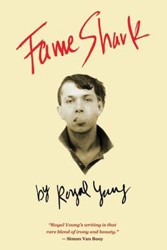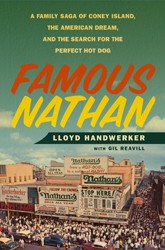By
– August 31, 2011
While living in the United States in the 1950’s Yoram Kaniuk met an angry, embittered William Saroyan. It was a onesided conversation where the older writer, a one-time Pulitzer Prize winner, mostly read aloud from his memoir My Name is Aram. Here was “an elderly man sitting and reciting— or guessing at — the fruits of his youth,” in Kaniuk’s description. In 2003, Kaniuk, then 73, took a turn at recalling his own youth in a 400-page cataract of words about that event-filled time of his life, translated now into this autobiographical novel.
Kaniuk arrived in New York by way of Paris, an aspiring artist fresh from fighting in Israel’s War of Independence, and immediately fell in love with the city, especially its jazz scene. He must have had enormous charm, as he does today, since he immediately became friendly with artists, writers, and musicians like Larry Rivers, James Agee, Charlie Parker (whose portrait he painted), Ben Webster, Max Roach, Lester Young, Bud Powell, Billie Holiday (who sang a song in his honor called “Yo’s Blues”), and Billy Strayhorn.
The author’s circle of personal friends could populate several novels. There’s Pat, the Southern belle whose black boyfriend was lynched in Alabama and who in Manhattan became the sex slave of a laconic Chinese man. Boris, a Russian Jew who played chess with Stalin and later worked at Los Alamos, had a daughter who became a nun, revived a convent in Spain, was given an audience with the Pope, then abandoned holy orders, sold illegal drugs, and renounced chastity in no uncertain terms. Kaniuk’s Israeli friend Oved, determined to get rich quick, took his friends on a wild road trip to Guatemala, stayed for forty years, became an arms merchant, and discovered a lost Mayan city.
Back in New York Kaniuk encountered an outlandish number of cultural giants. He knew Dylan Thomas from the Cedar Tavern in Greenwich Village; Yul Brynner spoke to him in Russian. Bob Fosse asked Kaniuk to recommend a dancer and he suggested Shirley MacLaine. He was friendly enough with Marlon Brando that one of his paintings hung over the actor’s bed. Kaniuk himself appeared on “The Tonight Show with Steve Allen” on NBC. He danced with Ginger Rogers and watched Stanley Kubrick edit his first feature film. James Dean watched him paint. Jerome Robbins liked him and bought ten of Kaniuk’s paintings; Gwen Verdon commissioned him to paint her. Pete Seeger helped inaugurate a hummus restaurant he opened with some friends. Perhaps not every detail happened exactly as reported; in an Author’s Note Kaniuk concedes that “it isn’t entirely incorrect to call this book a work of fiction.” But it must have been a dizzying life.
Though he was known as a painter in New York, he realized early that “modern painting is not an art through which you can really touch life or touch the hell within us or touch forgiveness or redemption, and painting like Dürer or Rembrandt is no longer possible, so I began hating paintings.” His doubts about painting grew so strong that he became determined to be a writer instead. He returned to Israel in 1960 after his first novel was published by the new imprint Atheneum.
Susan Sontag famously remarked that Yoram Kaniuk was one of the three best novelists she had encountered in translation (the other two are Gabriel Garcia Marquez and Peter Handke). Yet only a handful of his books are available in English, not including his memoir of the War of Independence called (“1948”) which made a sensation last year in Israel. This earlier autobiographical work, in a meticulous and penetrating translation by Anthony Berris, is a wonderful introduction to a writer who greets all of life’s adventures with open arms.
The author’s circle of personal friends could populate several novels. There’s Pat, the Southern belle whose black boyfriend was lynched in Alabama and who in Manhattan became the sex slave of a laconic Chinese man. Boris, a Russian Jew who played chess with Stalin and later worked at Los Alamos, had a daughter who became a nun, revived a convent in Spain, was given an audience with the Pope, then abandoned holy orders, sold illegal drugs, and renounced chastity in no uncertain terms. Kaniuk’s Israeli friend Oved, determined to get rich quick, took his friends on a wild road trip to Guatemala, stayed for forty years, became an arms merchant, and discovered a lost Mayan city.
Back in New York Kaniuk encountered an outlandish number of cultural giants. He knew Dylan Thomas from the Cedar Tavern in Greenwich Village; Yul Brynner spoke to him in Russian. Bob Fosse asked Kaniuk to recommend a dancer and he suggested Shirley MacLaine. He was friendly enough with Marlon Brando that one of his paintings hung over the actor’s bed. Kaniuk himself appeared on “The Tonight Show with Steve Allen” on NBC. He danced with Ginger Rogers and watched Stanley Kubrick edit his first feature film. James Dean watched him paint. Jerome Robbins liked him and bought ten of Kaniuk’s paintings; Gwen Verdon commissioned him to paint her. Pete Seeger helped inaugurate a hummus restaurant he opened with some friends. Perhaps not every detail happened exactly as reported; in an Author’s Note Kaniuk concedes that “it isn’t entirely incorrect to call this book a work of fiction.” But it must have been a dizzying life.
Though he was known as a painter in New York, he realized early that “modern painting is not an art through which you can really touch life or touch the hell within us or touch forgiveness or redemption, and painting like Dürer or Rembrandt is no longer possible, so I began hating paintings.” His doubts about painting grew so strong that he became determined to be a writer instead. He returned to Israel in 1960 after his first novel was published by the new imprint Atheneum.
Susan Sontag famously remarked that Yoram Kaniuk was one of the three best novelists she had encountered in translation (the other two are Gabriel Garcia Marquez and Peter Handke). Yet only a handful of his books are available in English, not including his memoir of the War of Independence called (“1948”) which made a sensation last year in Israel. This earlier autobiographical work, in a meticulous and penetrating translation by Anthony Berris, is a wonderful introduction to a writer who greets all of life’s adventures with open arms.
Bob Goldfarb is President Emeritus of Jewish Creativity International.



